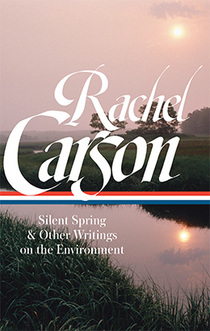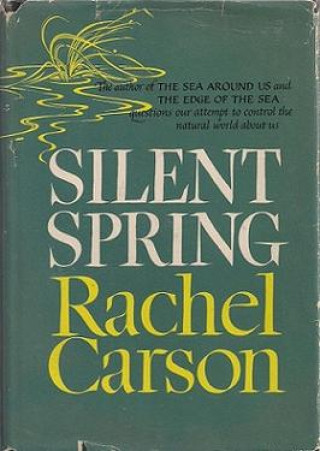Carson is rightly remembered as the writer who launched the modern environmental movement. She is celebrated for taking on the cultural myth of harmlessness promulgated by a chemical industry looking for new peacetime markets for chemicals developed in wartime, an agricultural industry desperate to control crop-threatening pests, and a government that had failed spectacularly to protect the public interest. ‘The obligation to endure,’ she wrote, ‘gives us the right to know.’
The scientific achievement of Silent Spring is less often heralded. By making connections across disciplines Carson inferred the way chemical pesticides disrupt endocrine function and lead to tumour formation before any of this was established science. Of the links between pesticides and cancer, she wrote to a Connecticut doctor called Morton Biskind: ‘Recently some of my thinking on all this has begun to fit together like the pieces of a jigsaw puzzle ... a great light is breaking in my mind.’ As the biologist and environmental writer Sandra Steingraber writes in her introduction to ‘Silent Spring’ and Other Writings on the Environment, ‘Carson had an uncanny ability, when she discovered gaps in the data, to see across the far shore and make predictions that have turned out to be correct, which is not to say that she was prescient. She just knew how to extrapolate.’ Steingraber points out that Carson
was able to document troubling links between pesticide exposures and cancer risk even though she was working without state-based cancer registries (which came into being c.1970-90) and without a working model of endocrine disruption (c.1996) or epigenetics (c.2008), both of which elucidate how toxic chemicals can alter DNA activity even in the absence of mutations or other genetic injury. When she was drafting her chapters, it was not yet accepted toxicological wisdom that the timing of exposure matters, with exposures during pregnancy, infancy and early childhood mattering the most. Carson also lacked geographic information systems (GIS) and computer mapping programs that can generate visually compelling pictures of potential cancer clusters and other temporospatial patterns for statistical analysis. And yet, through careful, painstaking sleuthing, Carson believed that she was seeing the early signs of a cancer epidemic in slow motion. She was especially concerned with early-life exposures and the apparent rise in cancers among children. And she was right.
Silent Spring demonstrated, with scientific rigour and in heart-thumping prose, that chemical pesticides were not just poisoning their intended insect or weed targets, but accumulating in living cells, where they altered essential cellular machinery, interacted in unpredictable ways, and mutated genes in a heritable waterfall of damage that was warping the entire ‘web of life’.
There is a belief, particularly prevalent among scientists, that science writing is more or less glorified PR – scientists do the intellectual work of discovery and writers port their findings from lab to public – but Silent Spring is a powerful reminder that great science writing can expand our scientific and cultural imaginations. Rarely has the work of a single author – or, indeed, a single book – had such an immediate and profound impact on society. Silent Spring was the first book to persuade a wide audience of the interconnectedness of all life, ushering in the idea that ‘nature’ refers to ecosystems that include humans. It spurred the passage in the United States of the Clean Air Act (1963), the Wilderness Act (1964), the National Environmental Policy Act (1970), the Clean Water Act (1972) and the Endangered Species Act (1973). Perhaps most significant, it showed how human health and well-being ties in with the health of our environment, leading to the establishment of the Environmental Protection Agency in 1970. No wonder, then, that writers, activists and scientists concerned about the ongoing destruction of biodiversity and the catastrophic effects of climate change look to Carson with urgent nostalgia.

